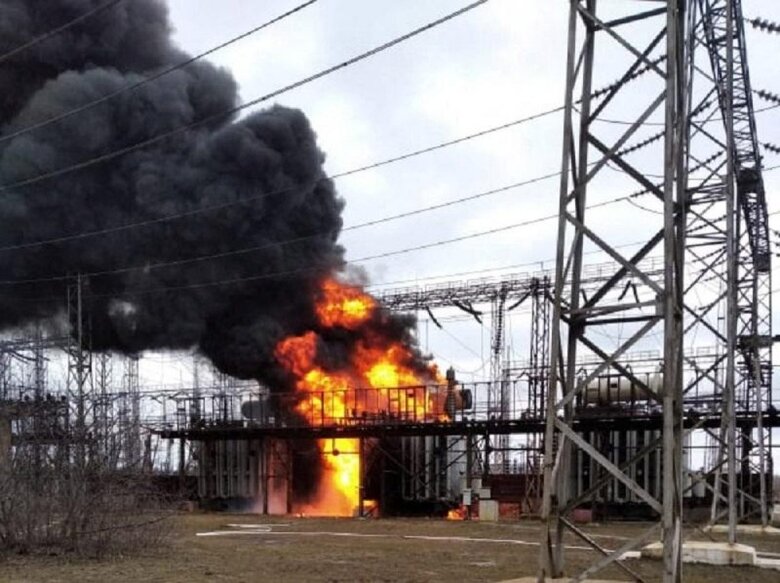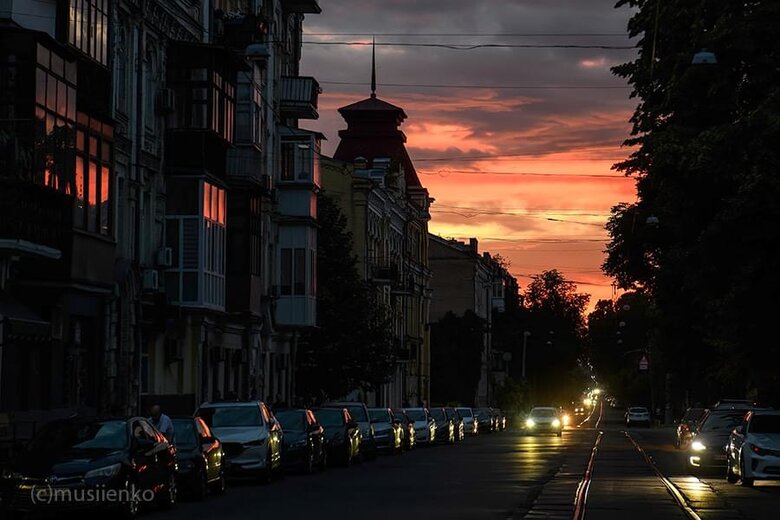"There is now light phase of deficit". What awaits Ukrainian energy sector and Ukrainians in winter
On June 5, the FT published an article reporting that since the start of the full-scale invasion, Russia has destroyed more than half of Ukraine’s electricity production, and that generation in Ukraine has fallen from 55 to 20 GW.
The article also stated that due to Russian shelling in winter, residents of Ukraine are likely to spend most of the day without electricity.
"If no measures are taken, according to our modeling, the population will probably have only two to four hours of electricity [per day] in January," the FT quotes Boris Dodonov, head of the energy and climate research department at the Kyiv School of Economics, as saying.
The next day, Ukraine's Energy Ministry said that the Financial Times article about Russia's destruction of Ukraine's energy sector " has signs of disinformation and psyop" in the interests of Russia.
"The article uses references to anonymous sources in the Ukrainian government. This calls into question the reliability of the information provided, as it is not confirmed by official sources. The audience should understand that references to anonymous sources without specific confirmation are not reliable information, and conclusions can be manipulated. For example, an unnamed representative of the Ukrainian authorities in the article states that "We must prepare for life in the cold and dark". This statement is aimed at spreading fear and panic among the population," the ministry said.
"Ukrainians are an indomitable people who know how to unite and overcome difficulties.
Power engineers are restoring what was destroyed by Russia and doing everything possible to keep the power grid running. Ukrainians will have electricity and heat," the Energy Ministry assured.
However, it is unlikely that the latter words have inspired too much optimism in the hearts of Ukrainians, who are already living without electricity in June, far from 4x4 mode.
Censor.NET tried to find out what real risks Ukrainians will face.
On 7 June, Prime Minister Denys Shmyhal confirmed during a national marathon that Russia had destroyed 50% of our electricity generation capacity.
"As of today, we have lost 9.2 GW of electricity due to missile and drone attacks, which is half of our capacity that we had last winter, for example. In fact, 42 power units have been destroyed, 27% of large thermal power plants remain in operation, 73% have been destroyed or damaged and are not working today," the Prime Minister said.
Russia's strikes caused the most damage to Ukraine on 22 March. According to Deputy Energy Minister Mykola Kolisnyk, the country lost eight gigawatts of power that day.
The Deputy Minister estimated the total losses since the beginning of the year at 9.2 gigawatts.
Russia's spring attacks in 2024 were much more tangible.
Moscow has improved its tactics, first using up to 30 Shaheds to strike the facility and then launching a missile into the power house.
On 24 March, YASNO CEO Serhii Kovalenko said that DTEK had lost 50 per cent of its electricity generation capacity as a result of the latest strikes by Russian troops.
According to energy experts, since the beginning of the war, Ukraine has lost about half of its electricity generation capacity. Most of the country's thermal and hydroelectric power plants were destroyed.
At the same time, the minimum forecast for recovery is one year.
Back in April, the power engineers with whom Censor.NET spoke predicted that there could be power outages in Ukraine as early as the summer. An unexpected cold snap in May and several more successful Russian strikes brought the situation to the point where in June some Kyiv residents spent 10 hours without electricity last week.
Olena Lapenko, an energy security expert at DiXi Group, previously stated that even in summer, Ukraine would lack 1.3 gigawatts.
Already, Ukraine is importing record volumes from its neighbours, including Romania, Slovakia and Poland. However, even this is not enough to compensate for the loss of electricity. Increased imports will lead to problems on the lines of European countries.
Ukrainians have spent the last two days with almost no power outages. The reason is that on Saturday, a power unit at a nuclear power plant was reconnected to the grid after scheduled repairs. According to the Ministry of Energy, this was done 10 days ahead of schedule.
However, this is only a reason for a short respite.
Photo by Vladyslav Musienko
Since the main source of happiness and electricity is the nuclear unit that is back in operation (and summer is the season of scheduled maintenance), this improvement will last until 24 June, when the next unit will be repaired.
According to Volodymyr Kudrytskyi, CEO of Ukrenergo, the most difficult month of the summer will be July, when NPP units will have the lowest capacity due to scheduled maintenance, and the heat will additionally affect the system.
The units will be repaired by the end of the summer, but they will only be able to start operating by the end of autumn. And there will be a significant drop in temperature and much bigger problems.
Everything that is happening now is, as Censor.NET's interlocutors say, "a light phase of the deficit".
We'll talk about gloomy winter scenarios a bit hereunder, but for now, let's talk about summer.
In particular, about how many people are disconnected. Because the 4x4 rule clearly does not apply to everyone.
"Each region has limits for each hour. If they are exceeded, the power system starts consuming more power than is produced or imported, and this leads to an imbalance. In this case, we are forced to use emergency power outage schedules rather than planned ones in order to quickly bring the system back into balance," Kudrytskyi explained to UP.
In other words, of course, no Ukrenergo can forbid us all to switch on electric stoves, washing machines, ecoflows and irons at the same time when there is power. But this leads to blackouts, or emergency power outages, as YASNO affectionately calls them.
If you have found out an expert analysis on the Internet somewhere that not all regions have the same blackouts, it is true. And in a village in Chernihiv or Ternopil region, the situation with blackouts is much better than in Kyiv region.
While the theoretical shortage of electricity in Kyiv is 25%, in reality the figure is 50-60%.
As Serhiy Kovalenko, director of the energy company YASNO, wrote on Facebook, this is due to the large number of critical facilities that cannot be switched off.
It's clear that Kyiv has more critical infrastructure than Chernihiv, and there are many times more factories in the Dnipropetrovsk region than in the Khmelnytskyi region. But there is a nuance. The fact is that the list of critical infrastructure facilities is approved by the military administration.
And there is a strange situation: there are blackouts for kindergartens, there are blackouts for factories that make parts for our airplanes that carry weapons, but there are no blackouts for some hotels (which have a reputation as vacation places for respectable men with beautiful women) in the center of Kyiv. For some reason, these hotels are critical infrastructure.
To get away from the limits, the option of disconnecting in queues has been tested starting from Saturday. When 2 queues will be disconnected (each with a certain number of consumers). However, this will not yet solve the problem of concurrent load on the lines that energize critical infrastructure.
But it is clear that the worst will happen when the cold weather comes and the heating needs to be switched on. It will be most difficult for those homes in large cities that depend on central heating and water supply.
It will be easier for small towns, where cogeneration units and modular boiler houses can be installed.
For example, in Khmelnytskyi, they placed a bet on cogeneration units. The first cogeneration unit was installed back in 2003.
"Thanks to cogeneration, for many years the cost of one gigacalorie of heat in Khmelnytskyi was one of the lowest in Ukraine. Now the cost of a gigacalorie is UAH 1,480, which is a fairly reasonable price, and it was achieved thanks to the production of our own electricity. Now, when the enemy is destroying infrastructure, this is the only way to provide the city with heat," Vasyl Novachok, Deputy Mayor of Khmelnytskyi, told Espresso.Zakhid.
Unfortunately, there are very few examples of such cities.
And while the needs of small towns will be a little easier to meet, for large cities, where the main sources of generation are broken, this poses a threat of disaster.
At the same time, journalist Yurii Nikolov, who specializes in analyzing tenders on ProZorro, has not found any such procurement, for example, for Dnipro.
"Realising what a disaster some Ukrainian cities could face due to heating shutdowns (!) this autumn in large parts of these cities, I went to ProZorro to see what mayors were ordering for big money. And I became interested in construction projects in Dnipro. In April and May alone, I found a dozen and a half projects worth 1.4 billion hryvnias. And every project seems to be needed - building a shelter at school, repairing a hospital, insulating a facade, or rebuilding a house destroyed by ruscists. But we can only believe that Filatov and Lysak have solved the issue of energy security and heat in Dnipro. Because I didn't see a large purchase of cogenerators (maybe they are counting on humanitarian aid, but it's silent on all radars)," the journalist said.
Kharkiv region communities are waiting for UAH 2 billion from the government to build modular boiler houses.
In a comment to Telegraf, Deputy Minister for Community Development, Territories and Infrastructure Nataliia Khotsianivska assured that the ministry is working with international partners to supply gas-piston power plants and block-modular boiler houses.
"Kharkiv needs 37 gas-piston generating units. The provision of 17 units has been confirmed by USAID and 6 units by UNICEF. Negotiations are underway with potential donors for five units," Khotsianivska said.
Surviving this winter seems to be the main challenge for Ukraine.
Recovery. Almost all thermal power generation in Ukraine has been destroyed or damaged. In particular, Kurakhove, Trypillia, and Zmiivska TPPs were destroyed. Two large hydroelectric power plants were severely damaged.
Their restoration is a matter of years. For example, a steam turbine takes 9-12 months to make to order.
As you know, the Ministry of Energy is betting on the completion of nuclear units, and Energoatom has even decided to build its own concrete plant for this purpose. On April 4, the Khmelnytska NPP branch of JSC NNEGC Energoatom ordered its project for almost UAH 22 million from the Prisma Innovation Company LLC.
At the same time, the development of distributed generation continues to be ignored. Even though it would be much faster to build and harder for Russians to disrupt.
Large and medium-sized businesses are ready to invest in such generation, at least for the sake of supplying their own enterprises with electricity, and even making a good profit.
However, to do this, the state needs to pay off its debts on the balancing market and then ask for a loan from international partners again. It is possible that it will be the latter.
Decentralized generation is virtually the clear choice way now for Ukraine. Although no one will build it before winter.
Tetiana Nikolaienko, Censor. NET



